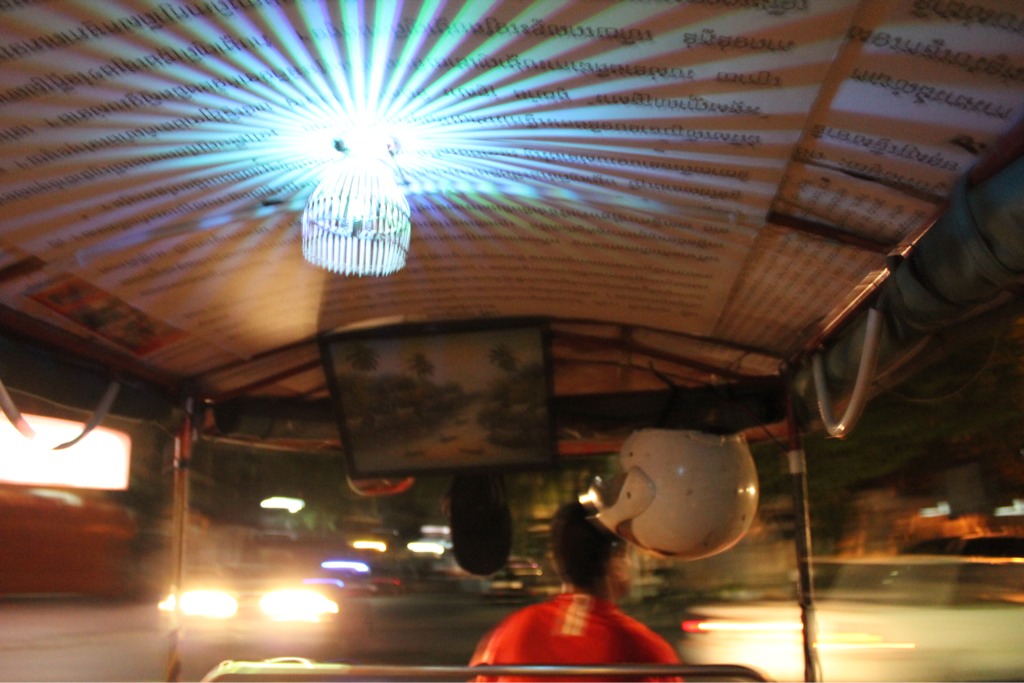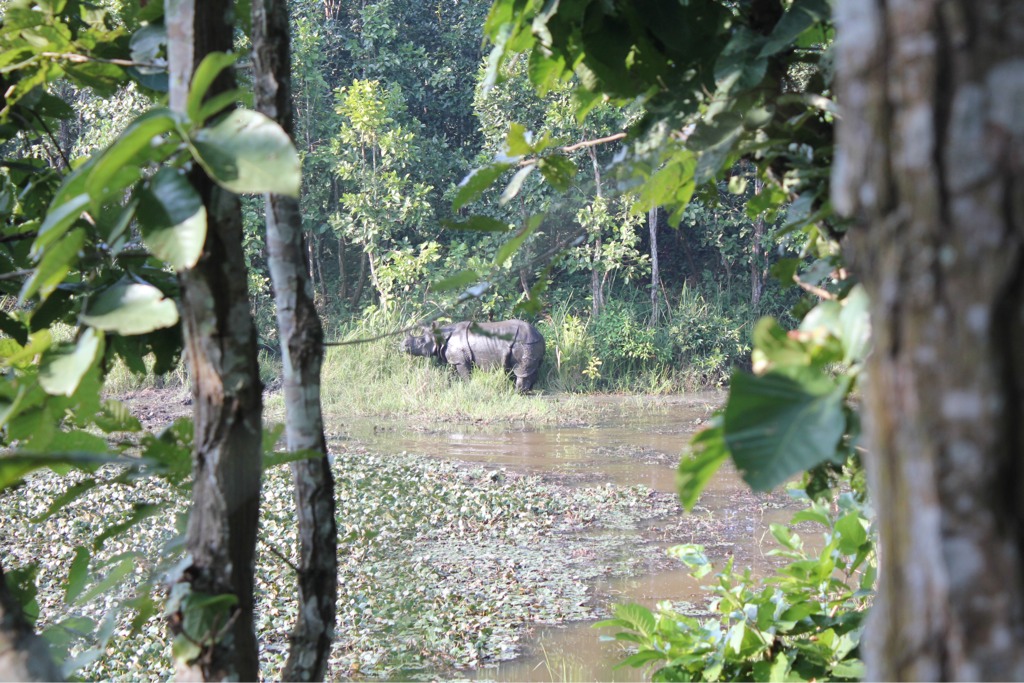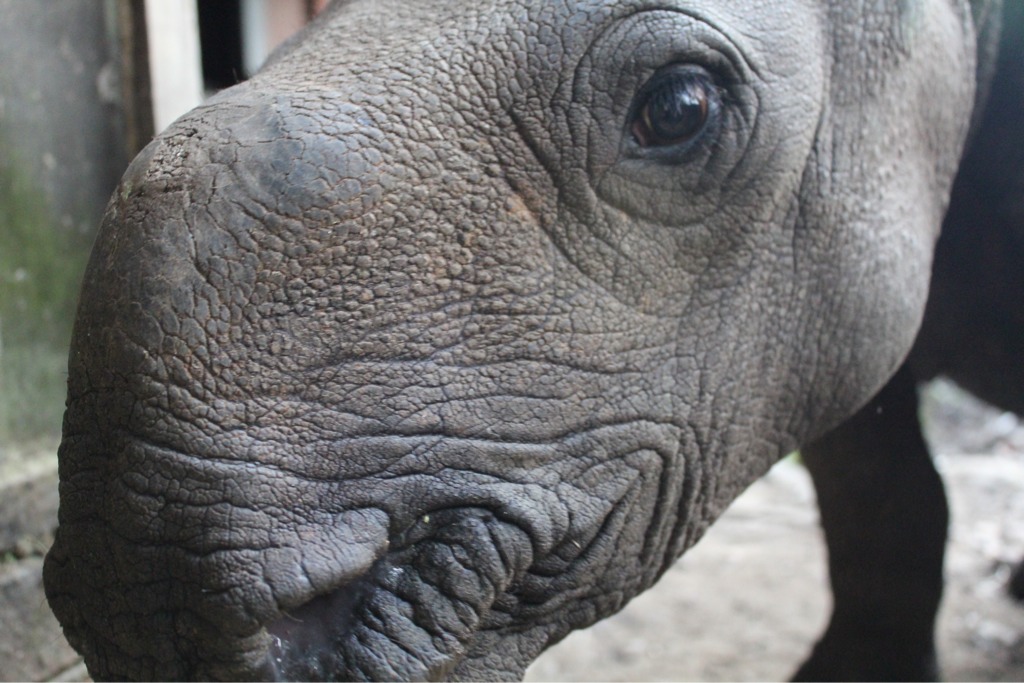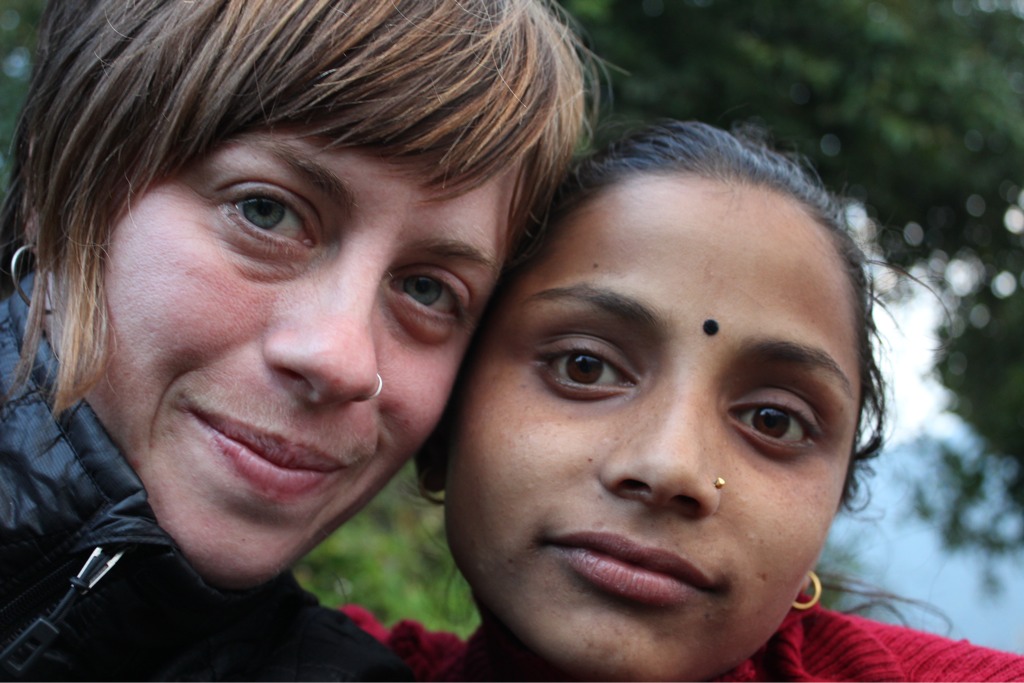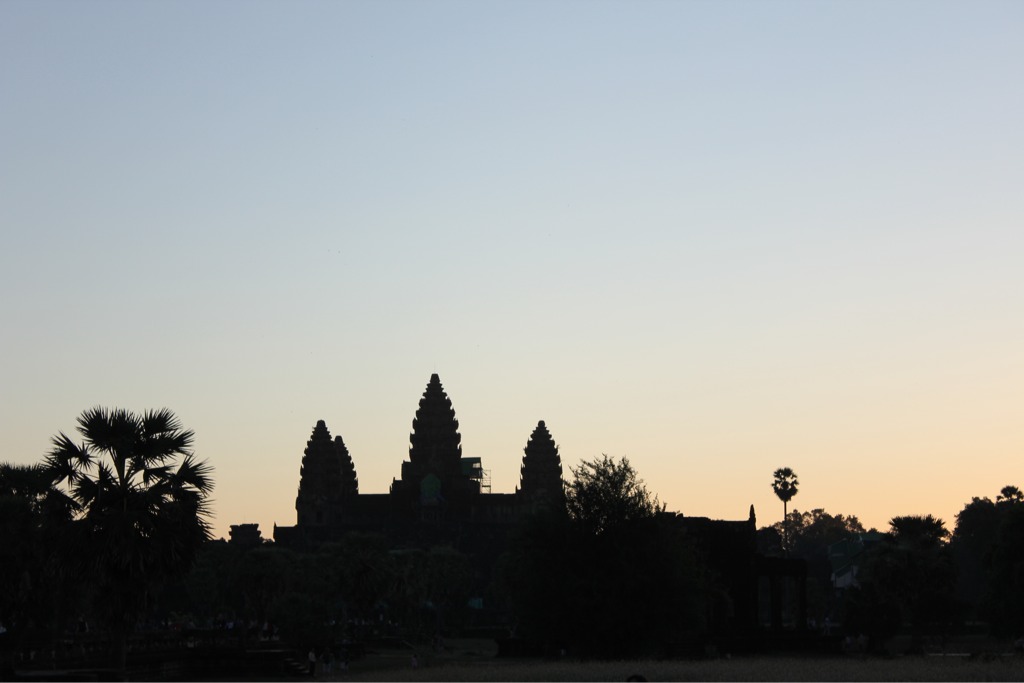 Cambodia: Land of friendly people, two seasons (hot, hot/wet), fried insects, Angkor Wat, and, unfortunately, the some of the worst recent history in the world. I can mention all that off the top of my head now because we've been here for almost two weeks already, but I'll save some of the details for a future post in the interest of keeping this somewhat chronological.
Cambodia: Land of friendly people, two seasons (hot, hot/wet), fried insects, Angkor Wat, and, unfortunately, the some of the worst recent history in the world. I can mention all that off the top of my head now because we've been here for almost two weeks already, but I'll save some of the details for a future post in the interest of keeping this somewhat chronological.
We arrived by bus on November 22 to the unscrupulous, scam-trap border town of Poipet and, despite getting through the visa and border crossing process hassle free, were harangued into the hands of "government tourist agents" (there's no government tourist office in Cambodia) from the minute we crossed out of Thailand all the way to Siem Reap. That's not to say we got scammed - after all, we arrived having paid no more than we should have for any part of it - but they did do their best to get us to eat and stay with their sponsored guesthouses and restaurants. Having read up on it beforehand, we departed their services and headed straight for our pre-booked guesthouse by moto tuk-tuk in the warm darkness.
I'd be lying if I said that it wasn't a bit of a rough start in Cambodia, but for every experience like that that we've had on this trip, there have been far more endearing points and Siem Reap (and Cambodia as a whole) have been no different.
Siem Reap is home to Angkor Wat. Technically, the ancient temples are a few kilometers outside of town, but the city clearly exists to serve the temples' draw - in the past probably locally, now via tourism. The main center of town revolves around several square blocks of restaurant, markets (day and night), pubs, food carts and guesthouses. We perused the market stalls, tried the local specialty: fish amok, shared some good (and funny) conversations and food* with the ever friendly and helpful crew running our guesthouse, chased down the street vendor selling delicious grilled rice cakes stuffed with some sort of greens, and of course, explored the ruins for the better part of three days.

It's true, what you read, about their grandiose scale. Temple after temple, monument after monument...all spread over kilometer after kilometer, most of them are in the 1000 year old range and were built to both impress and to honor by several generations of kings. The massive and dense sandstone architecture with all of the bas-reliefs and ornamental carvings serves as an impressive reminder of the capabilities of these ancient societies.
Below is nature taking over some of the ruins at Ta Prohm (a highlight for us and probably most, given the added natural beauty of the trees taking hold), some of the carvings on one of the long hall walls at Angkor Wat, and a crumbling, straight-out-of-ancient-Greece former library at Preah Khan.
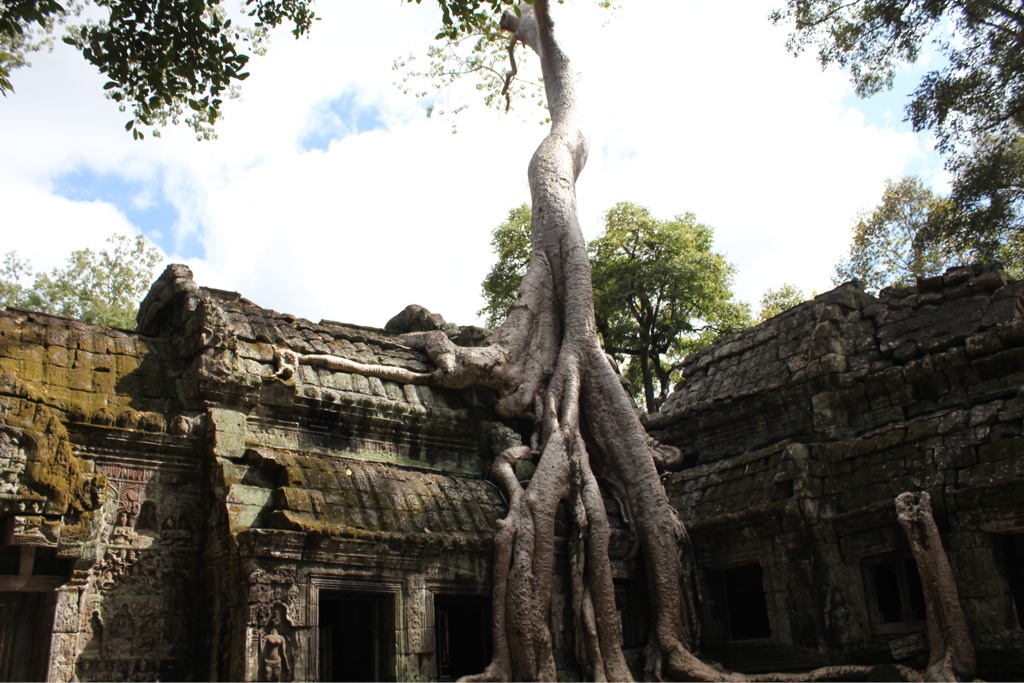


I say we spent the better part of three days at the temples because, while we had a three day pass, our sunrise bike ride to Angkor Wat on day three ended early thanks to my not feeling so well. We did manage, however, to power through to the top of the world's largest religious structure, Angkor Wat, before calling it a day. I'd post a nice picture of that here, but since I already used that one up top, I'll instead show a self portrait of us trying to sum up the feeling of clambering around ancient ruins with a mass of other tourists while feeling...well, crappy.
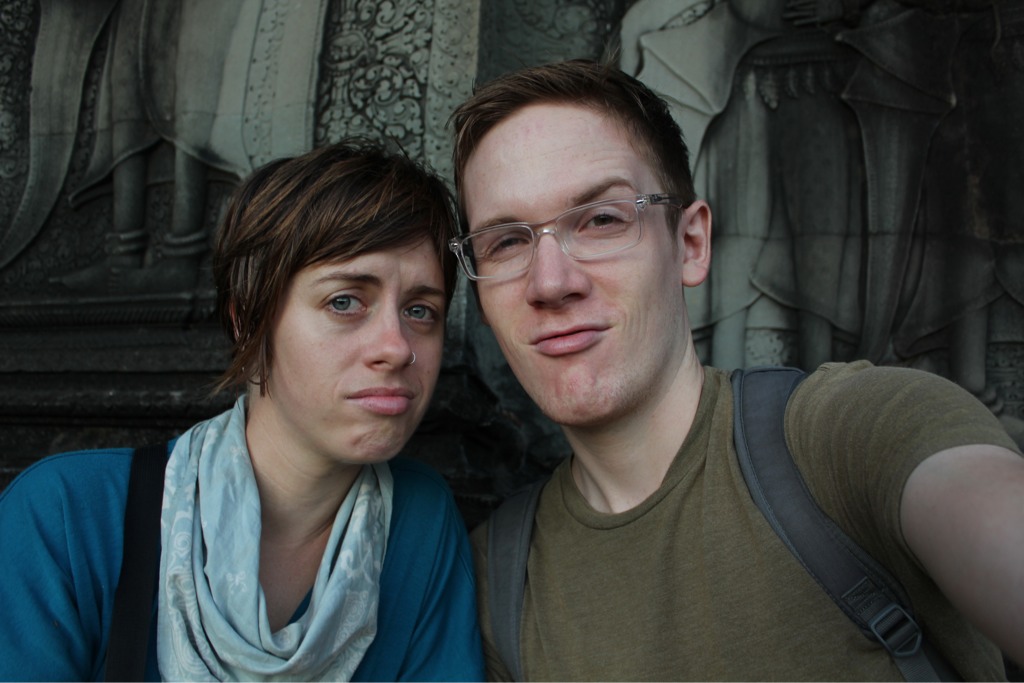
It started out nothing too serious, mind you...just a little queasiness and a fever. The next day, however, the fever had climbed to 103° and Casey decided it was time for me to visit a doctor. Cue a moto tuk-tuk to the quietest (and really quite nice) facilities at the mind-easingly named Royal Angkor International Hospital where, an hour later, a couple of tests revealed it all to be nothing more than that medieval favorite: amoebic dysentery. To be honest, my developed-world brain didn't realize that still existed, but three, antibiotic filled days later I was back on track and we were on our way to Phnom Penh. In our back pockets (but at the front of our minds) was one more real life experience proving to us both that while not every place will (or can) be our favorite and some might be downright difficult, there's something of value everywhere we've been - it just takes a little extra patience sometimes.
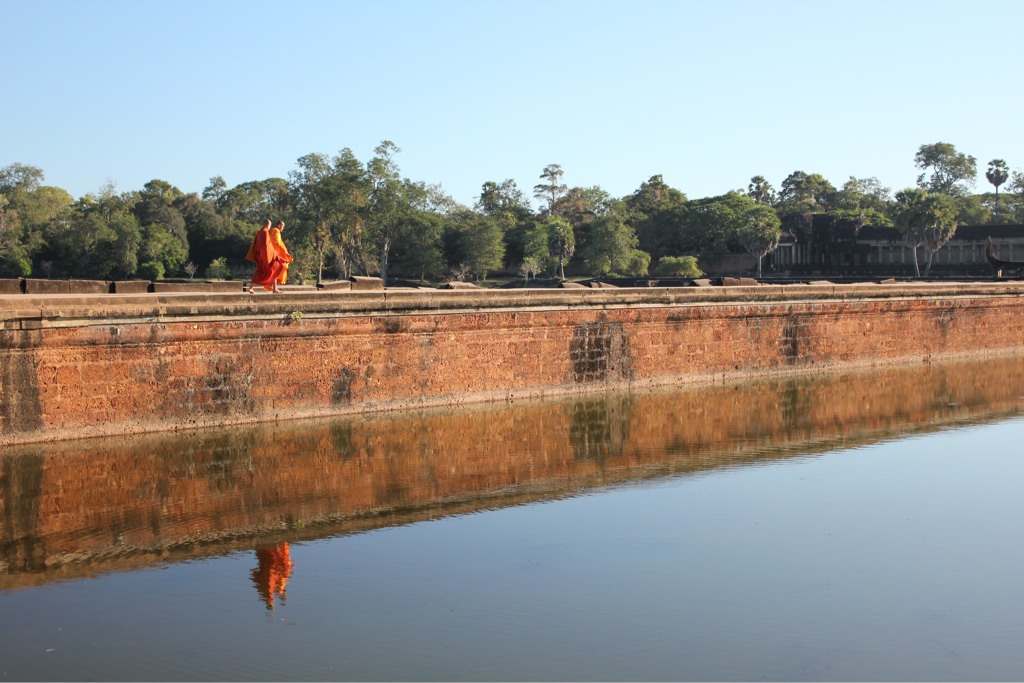
----------
* In one particularly worthwhile moment, Ti, the manager at our guesthouse, invited Casey to share in some of the grilled fish dinner he and one of the employees were having for dinner. It proved a welcome break in the tourism veneer and a valuable bonding moment in a place where people like us seem to come and go so quickly that nobody tries too hard to bond. This kind of grounding experience, in absence, has provided some of the hardest moments of our trip, so in places we know nobody (read: Cambodia), they are doubly appreciated.
Location:Phnom Penh, Cambodia







